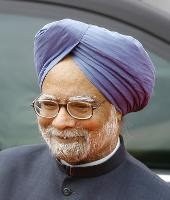With its rich civilizational history and long tradition of argumentation, India is no stranger to grand strategy. In 300 B.C., Chanakya, better known as Kautilya, the main adviser to King Chandragupta during the Mauryan Dynasty, wrote “The Arthaashastra,” a treatise on statecraft, military strategy and economic policy still referred to by many strategists today.
Yet many foreigners and Indians alike have noted that this tradition of strategic thinking has not found its way into contemporary Indian foreign policy. In 1992, the American analyst George Tanham famously wrote (.pdf) that India had “produced little formal strategic thinking and planning.” Pratab Bhanu Mehta, an influential academic and current head of the Center for Policy Research (CPR) in New Delhi, has noted not only the lack of a “grand strategy” in Indian foreign policy thinking, but also the absence of traditional foreign policy drivers, such as the quest for power. The concept of nonalignment championed by India's first prime minister, Jawarhal Nehru, which advocated preserving India's freedom to act by not aligning it to any bloc or alliance, did serve as a guidepost for Indian foreign policy during the Cold War decades of superpower rivalry. However, the end of the Cold War left India without a clear foreign policy strategy for the dramatically changed global order that followed.
That has begun to change over the past decade or so, which has seen a proliferation of high-quality works devoted to Indian foreign policy strategy that provide a window on how India's strategic thinkers view the world and India's role in it in the next few decades. In more recent works, there has also been a concerted attempt to either conduct or draw upon rigorous strategic forecasting as part of the analysis and to integrate differing global scenarios into charting India's future foreign policy strategy. A survey of what is being written and what is being said by Indian officials also suggests that foreign policy thinking by India's strategic community is in the early stages of being integrated into the making and articulation of actual foreign policy. Though the extent of this congruency is difficult to measure and will probably be more visible only after another decade, these early signs are nonetheless promising.

